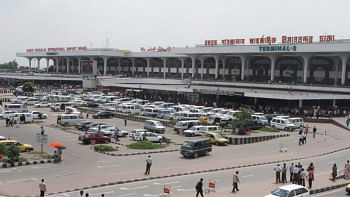The tyranny of cost-benefit analysis
Cost-benefit analysis (CBA) is a powerful tool used in business decision making and economic modelling. However, its limitations are also well-known. The most important drawbacks of CBA are: the benefits and costs of a project are sometimes difficult to capture in monetary terms; and most infrastructure projects last into the future and this necessitates tricky calibrations with discount rates, and projections of price and socio-economic variables during a project's lifespan. When economists hand over their findings from CBA to politicians, it is important to be upfront about the "ifs and buts" of the analysis, and to caution the user of the dangers of making sweeping statements about the superiority of alternative technologies or policy options.
In recent weeks, I have followed with interest the conversation on the off-grid electricity generation between Dr. Bjorn Lomborg of Copenhagen Consensus and Prof. Sebastian Groh of IUB, Bangladesh. Since the issue is important, relevant, and current, I would like to offer my take on the results of CBA applied to solar cells and diesel generation, and the conclusions one can draw from the calculations done by the researchers at East-West University.
At the outset, Dr. Lomborg's series on Bangladesh's priorities is laudable, and his attempts to raise the current discussion to a more analytical level, using CBA in the mix, to come up with measures to accelerate welfare and growth in Bangladesh is very encouraging. I will mention three policy discussions in particular, where he has used results based on CBA to make drastic changes to our current policies: poverty alleviation, electricity for the non-grid households, and RMG strategies. Here, I will limit my observations to Dr. Lomborg's comments on the solar vs. diesel controversy, simply because I was only able to access the cost-benefit study entitled "Benefits of Lighting-A Cost Benefit Analysis on Distributed Solar Home Systems" done by Prof. A.K. Enamul Haque of East-West University, on which the former's comments are based.
In "Bringing electricity to more Bangladeshis", published on May 25, 2016, Dr. Lomborg advocates switching from solar panels to diesel. There are three areas of weaknesses that I will point out after a thorough review of the article in The Daily Star, the research paper by Prof. Haque, and my email exchanges with Prof. Enamul Haque and Dr. Lomborg's office.
What caught my attention was a couple of aspects of Dr. Lomborg's key proposition, "better to go for diesel than solar," and the certainty with which he was offering the suggestion. I delved into the research conducted by Haque. The cost of diesel-powered electricity is reported to be Tk. 1.84, whereas the cost of solar is Tk. 4.56. Since the latter is expensive, he drew two conclusions: abandon solar in favour of diesel and; if diesel generators are used, more people will get power for the same investment.
First of all, there are some errors of calculation in Haque's paper. The paper assumes that the rural off-grid power users form a team of five members and purchase a 200 kVA diesel generator (DG). To quote, "While most of the SHS (solar home system) units are of 40 Wp (Watt Peak), the generator is of 200 KVA. Therefore, we assumed that electricity from a generator is shared among five neighbouring households". Based on the utilisation of this DG unit for four hours a day, I calculated the cost of 1 kWH of electricity, which according to my calculations, is much higher than the Tk. 1.84 per kWH cited by Prof. Haque and Dr. Lomborg.
I wrote to Dr. Lomborg, pointing out that the calculations in Haque's paper left out the cost of diesel in operating a diesel generator. In his response, I was informed that any reference to a 200 KVA generator "must have been a mistake".
In the email response forwarded by Dr. Lomborg's office, Prof. Haque indicates that he is using a fixed value for the cost of electricity in his calculations: $.10989 per kWH. And I quote:
"100 watt power generator for 4 hours a day = 100/1000*4hour/day=.4 kWh (kilowatt hour)
For Cost is .4 x $.10989 = 0.043956 $ x 78 taka per dollar = 3.42 taka variable costs + 20% maintenance cost = 4.10 taka per generator * 15 percent allowances for fixed investment is approx 5.00 taka approx per generator. Sharing this between five households means average cost is about 0.92 taka per household has been used for the analysis."
The assumptions behind this calculation are questionable and need further examination. First of all, the methodology adopted by Prof. Haque's research team, particularly using cost of electricity as a fixed coefficient at 10 cents per kWH, raises some important questions. Is that applicable in the case of power generation for Bangladesh using diesel fuel? What is the source of this cost calculation?
I used the numbers in Haque's study, i.e. cost of an engine of Tk. 15,000 and the annual O&M of Tk. 3,000 (or 20 percent). That works out to be Tk.10 per day to run the unit. However, the cost of operating the 200 KVA generator was considered to be 1 litre per hour, costing Tk. 136 for two hours. Again, the cost of power generation by DG sharply contrasts the research findings of the paper.
Secondly, another important lacuna of the research and the CBA is the assumption of constant prices over the next 20 years, the lifetime of the projects. In response to my query, Prof. Haque wrote to me, "Prices are measured in constant taka for all options." The most important variable is the prices of diesel (and solar panels and batteries), and according to one report, "98 percent of the total running cost of electricity generation using DG is the cost of fuel." Being so, the assumed price of diesel in Bangladesh can change, and it would have been appropriate for the research team to conduct a "sensitivity analysis" using some likely price scenarios.
In this context, I quote from a recent paper by Profs. J. Doyne Farmer of Oxford University and Francoise Lafond of the United Nations University, Maastricht, titled, "How predictable is technological progress." They use Moore's Law on technological improvements such as solar technology, and strongly advocate using distributional forecasts, i.e., estimating the likelihood of different future outcomes. Their work casts doubts on the methodology adopted by Haque and Lomborg in their forecasts. To quote, "Point forecasts are of limited value unless they are very accurate, and when uncertainties are large they can even be dangerous if they are taken too seriously."
Thirdly, what are the chances that the price of diesel will remain Tk. 68 for the next 20 years? Very slim, indeed! According to projections made by the Energy Information Administration (EIA), a US government agency, crude oil prices are expected to increase by 30 percent even under the "low oil price" scenario". In contrast, the cost of a Watt of solar photovoltaic capacity has been dropping exponentially, and since 1980, has decreased by 10 percent annually. Solairedirect, France's second largest solar power company, offered to supply solar power to India's national power grid at Rs. 7.49 (US$0.14) per unit (kWh). This rate is now better than the average cost of power generated by diesel generators, which is about Rs. 13 (US$0.25) per unit.
In conclusion, the moral of the story is, one needs to look at numbers very closely, both in the calculations done by Haque's team and research in India and elsewhere before making sweeping generalisations.
The writer is an economist and writes on public policy issues.

 For all latest news, follow The Daily Star's Google News channel.
For all latest news, follow The Daily Star's Google News channel. 



Comments